Tim and I set up on last (1/5) Saturday afternoon, and spent the evening watching the Seahawks lose; and Spinal Tap….which is always a winner.
Started playing before 0900 on Sunday and didn’t quit until 2200 or so.
The game doesn’t have a lot of counters, and the map size is modest. But, it’s long slog. With Soviet and NATO turns involving double impulses, a very active air war, and some accounting, we had to push it to get three turns in. Yes, we had an emergency beer run, but we really maintained our focus.
I fouled up by having several divisions advance towards the border in the NATO reaction phase after the Pact player intial set-up and before the first move. Can you say “envelopment”? Three would be eliminated in a series of exchanges that opened up a corridor for Soviet advances.
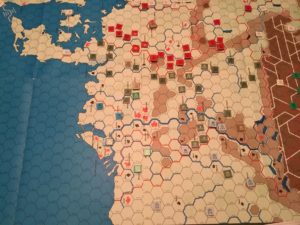
On the other hand, the surviving units provided hedgehogs in full city hexes, where a unit ignores retreat results. US Divisions and airmobile units for all countries have zones of control (ZOC) that reach out two hexes. Entering and leaving ZOCs takes an extra movement point, so these units can really slow down the Soviets.
Other Pact attacks developed near Denmark and against Jugoslavian units in in the Southwestern Theater. The Austrians had the sense to (at least initially) remain neutral.
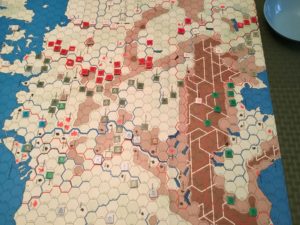
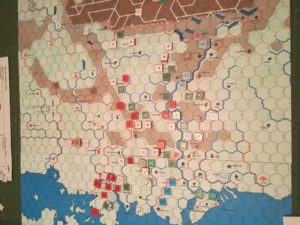
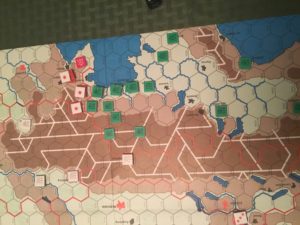
Nato used both of their Turn 1 impulses to patch together a MLR on both sides of the Rhine. Weaker units were used to garrison ports and cities to prevent a Pact vertical envelopment. Territorial units were slow to activate, hampering NATO efforts.
During the first impulse of the Turn 2, Warsaw Pact units surrounded isolated NATO units, eliminated them, and rapidly advanced to the Rhine, establishing a lodgement. Pact forces pushed NATO units out of Jutland, and slowly advanced in the Southwest Theater.
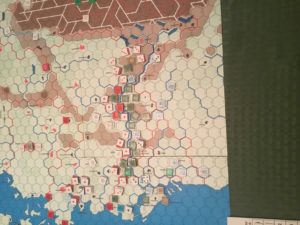
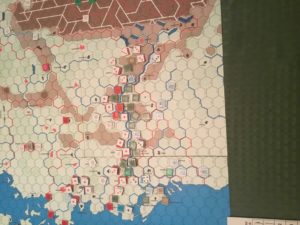
Suprisingly, but maybe not, the Soviets pulled back their attrited units to reorganize. This increases combat proficieny, eliminating potential negative combat shifts.
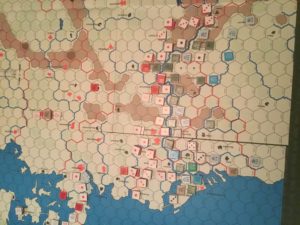
NATO units used their Turn 2 to continue bolstering their defenses along the Rhine, reacting to the Pact’s attempts to envelop from the South.
Soviet units assaulted along the Rhine River during Turn 3, but their successes were on the flanks, pushing back NATO units in The Netherlands, destroying a valuable POMCUS site, and continuing their envelopment to the South. It was only through bad die rolling that a Soviet airdrop in Belgium was foiled.
Again, NATO units could only react during their Turn, pulling in both flanks and trying to develop a defense in depth with smaller units to defend against the enveloped. NATO forces reduced, but were unsuccessful in eliminating the Pact lodgement over the Rhine. In the Southwest Theater Italian forces grudgingly gave ground against steady Soviet pressure.
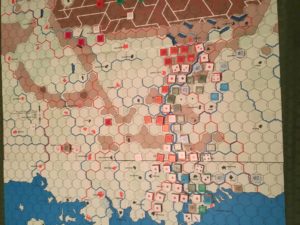
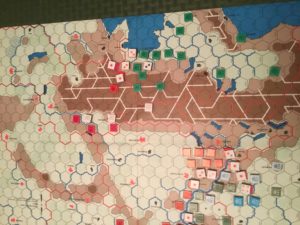
The Air War was bitterly contested. During his first turn, Tim used cratering missions to good effect. These eliminated sorely needed NATO aircraft. Both sides rolled poorly during the first turn’s maintenance phase, reducing aircraft availability. After that, serviceability rates improved, but missions were devoted to close-in support.